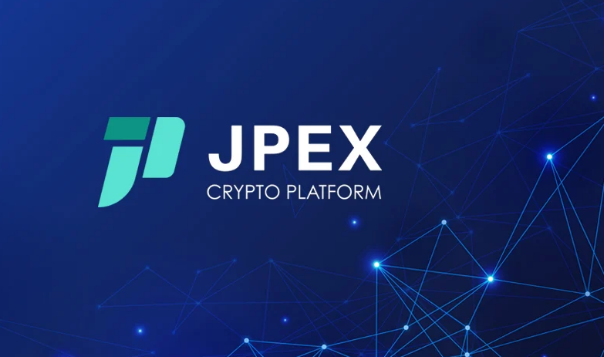
Crypto lending platform BlockFi recently got court approval to access customer assets to begin repayment, the latest development in the company’s bankruptcy process. This news comes on the heels of several major crypto trading platforms applying for regulatory licenses and disclosing details of their operations.
These events underscore the growing pains of the crypto industry as it seeks to balance innovation with appropriate oversight. For crypto investors, understanding the risks highlighted by BlockFi’s stumbles can inform smarter decisions. Increased transparency from trading venues applying for licenses also empowers users.
While potential drawbacks exist, the trend toward greater regulation and accountability in crypto will likely benefit investors and bring more maturity to the space. By staying informed and cautious, crypto participants can navigate the current turmoil and emerge stronger on the other side.
The BlockFi Situation: Risks to Crypto Lending Exposed
BlockFi made headlines in July 2022 when it paused withdrawals and then filed for Chapter 11 bankruptcy protection. The New Jersey-based crypto lending platform had accepted customer deposits to earn interest while lending them out to institutional counterparties.
When a string of debtors defaulted during the crypto market crash, BlockFi faced a severe liquidity crunch. To protect client assets as it restructured, BlockFi halted redemptions and transactions using a bankruptcy process.
Now a court has granted BlockFi permission to access deposits to begin repayments. The approved procedures include direct currency transfers back to customers holding crypto with BlockFi. For assets tied up in BlockFi’s debtor contracts, payouts could take the form of a combination of direct transfers and crypto earned as debt repayments come due.
The BlockFi situation reveals the inherent risks of crypto yield products. Attractive advertised returns often depend on risky lending and rehypothecation of customer assets. Without proper transparency and controls, a market downturn can quickly spiral into a full-blown solvency crisis.
Unlike banks insured by the FDIC, crypto lending platforms also lack any safety net when their bets go bust. While unfortunate for BlockFi customers, these incidents provide important lessons for investors choosing where to place their crypto holdings.
Greater Oversight Emerging from Regulatory and Self-Regulatory Efforts
The BlockFi bankruptcy is not happening in isolation. Regulators worldwide are still determining how best to oversee the crypto ecosystem. However, progress is being made on both mandatory supervision and industry self-regulation fronts.
Major centralized crypto exchanges increasingly understand the need to comply with licensing and auditing requirements to gain mainstream acceptance. Both FTX and Crypto.com have recently submitted license applications in key jurisdictions.
FTX US received registration from the Securities and Exchange Commission (SEC) and membership with the Financial Industry Regulatory Authority (FINRA). Crypto.com is seeking the green light from financial regulators in the UK, France, Italy, and Singapore.
Receiving registered status requires significant disclosures on custody, insurance, and risk management policies. Platforms must also commit to meeting capital requirements, implementing strong cybersecurity controls, and regular reporting. This level of transparency should give users more insight into the health of an exchange.
The industry has also made strides at self-regulation through organizations like the Crypto Council for Innovation. Top exchanges have individually adopted responsible practices around proof of reserves, insurance coverage, and custody segregation.
However, true accountability requires oversight from objective third parties not tied to specific commercial interests. As crypto matures, a hybrid framework of government regulation and industry collaboration will likely emerge.
Benefits and Potential Drawbacks of Stricter Crypto Oversight
Increased regulation and oversight of crypto carries tradeoffs, but will almost certainly create a better environment for investors overall.
The clear advantage is reducing risks that proper auditing and licensing requirements help avoid. Transparency around insurance coverage, custody controls, and reserves provides assurance. Accountability to government bodies incentivizes strong protections for customer assets and their use.
Mainstream acceptance and integration with the broader financial system depends on crypto operating responsibly. Reasonable guardrails that evolve with the technology will allow healthy expansion while curbing excesses.
However, regulation always carries potential downsides as well. Compliance costs could hinder innovation at small startups. Established players may monopolize licenses and limit competition. Decentralized services could move jurisdictions if one country overreaches with restrictive policies.
Perhaps the biggest concern is regulators crushing crypto’s foundational principles around independence from government control. However if done in moderation, increased oversight should strengthen the ecosystem for all stakeholders.
Key Takeaways for Informed Crypto Investing
The ongoing turmoil in crypto has created an uncertain environment for investors. However, focusing on fundamentals provides the best path forward:
- Closely evaluate risks of yield generating and lending platforms. High-promised returns often involve excessive speculation. Look for transparency on asset usage and leverage.
- Favor regulated providers when possible. Licenses and audited reserves offer greater security, though risks exist even at established firms.
- Diversify across platforms and custodians. Avoid concentrated exposures and regularly monitor account holdings. Cold storage provides an extra hedge for larger balances.
- Temper expectations in a downturn. Be wary of fear of missing out and unsustainable yields. Prioritize sound policies over marketing hype.
With prudent decisions based on rigorous analysis, the current crypto growing pains could ultimately strengthen the ecosystem. The increased transparency from licensing efforts empowers investors to make informed choices. And lessons learned from incidents like BlockFi will lead to better risk management industry-wide.
While challenges remain, the long-term outlook for crypto assets like Bitcoin and Ethereum remains positive. Staying cautiously engaged amidst the current shakeout could enable participating in the next growth cycle from a position of strength. With vigilance and measured optimism, crypto investors can navigate unstable conditions and achieve their financial objectives.





